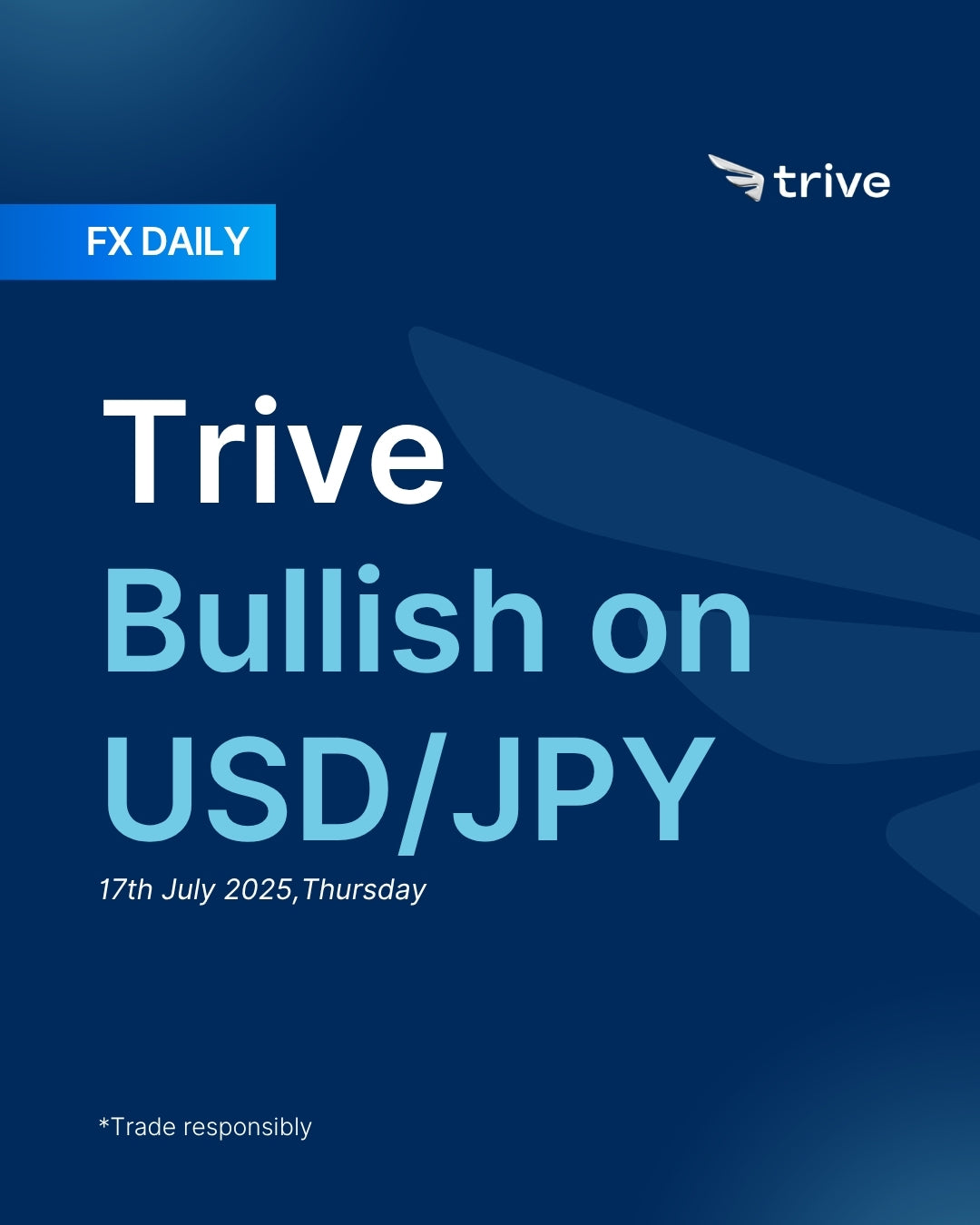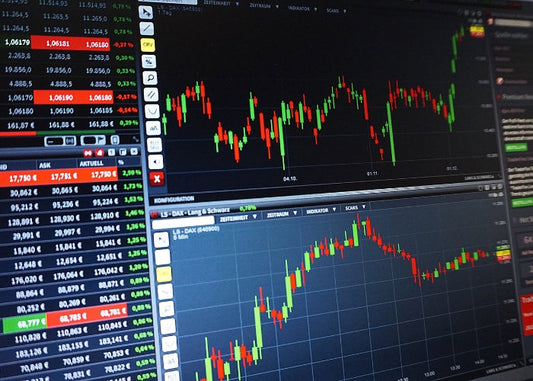FX Daily: Trive Bullish on USD/JPY

USD/JPY remains bullish as strong U.S. labor data, rising Treasury yields, and hawkish Fed tone support the dollar. Despite global trade uncertainty, markets interpret tariffs as tactical, not disruptive, keeping USD demand firm. Meanwhile, the yen weakens under BoJ’s dovish stance, weak domestic inflation, and heightened U.S.-Japan trade tensions. With Japan’s upper-house election and lack of BoJ policy traction, USD/JPY could extend gains toward 148+ if U.S. data stays firm.
USD: Still bearish, but not with yen
The US dollar began the week strongly, driven by a combination of intensifying trade rhetoric and a growing market view that the latest tariff announcements were more about bargaining than about actually choking off imports. Despite traditionally risk-sensitive environments tending to boost the dollar when uncertainty rises, the dollar index pushed higher to re-test its weekly highs rather than retreating on President Trump’s tariff declarations. Many investors appeared to treat the new levies, along with the extended implementation deadline of August 1, as negotiating signals or simply closed out prior bets on a weaker dollar. That resilience held even as the administration added Japan, South Korea, Brazil and Canada to the list of nations subject to higher duties.
Although U.S. economic releases were relatively sparse, the figures that did emerge reinforced a broadly steady outlook. Initial weekly jobless claims for the period ending July 5 fell to 227,000, well below the 235,000 expected and down from a revised 232,000 the week before. The four-week average also declined, underscoring continued strength in the labour market. Continuing claims rose to 1.965 million, a bit less than forecast, adding to signs that layoffs remained subdued. In the realm of consumer sentiment, the New York Fed’s survey showed that one-year ahead inflation expectations eased slightly to 3.0 percent from 3.2 percent, while the three- and five-year outlooks held at 3.0 percent and 2.6 percent respectively. Respondents also reported somewhat firmer labour market prospects, suggesting households felt the jobs environment was holding up.
On the fiscal side, June’s budget figures surprised with a $27 billion surplus, a significant swing from May’s deficit and largely attributable to a record $27 billion in customs duties. Those higher revenues reflected the immediate impact of increased tariffs. Business sentiment, as measured by the National Federation of Independent Business index, dipped slightly to 98.6 in June from 98.8, mainly because small firms voiced worries about excessive inventories and ongoing tax concerns.
Minutes from the Federal Open Market Committee’s June meeting confirmed a divided Fed: most officials still saw some rate cuts as appropriate later this year, but only a few—possibly Christopher Waller and Michelle Bowman—indicated they could support a cut as soon as July if incoming data played out as expected. Other participants judged that current policy was sufficiently restrictive given persistent inflation and solid economic activity, and several noted that rates might already be close to neutral. Among individual Fed speakers, Mr. Waller described policy as “pretty restrictive” relative to what he judged neutral; Mary Daly urged a shift toward thinking about rate cuts in line with the median dot-plot view of two cuts in 2025; Lisa Mester observed that the economy was “in a good place” and that tariffs had so far only mildly affected prices; and Austan Goolsbee warned that fresh tariff threats could delay any easing, forcing the central bank to maintain a cautious, “wait-and-see” stance.
Market-implied probabilities for Fed easing oscillated modestly over the week. By Friday, traders were pricing about 18 basis points of rate cuts in September, and roughly 50 basis points of total easing by year-end—little changed from the prior week and reflecting renewed concerns that broadening tariffs could stoke higher inflation.
President Trump used the week to expand his tariff campaign, sending letters to a wide array of countries and threatening duties ranging from 20 percent on Vietnam and the Philippines to as much as 50 percent on Brazil. Some nations, including Canada, faced a potential carve-out for goods covered by the U.S.–Mexico–Canada Agreement despite a 35 percent notice, while others such as Laos and Myanmar saw levies of 40 percent. Trump held firm on the August 1 implementation date and hinted that the European Union might avoid a direct letter but could face a blanket 20 percent tariff or higher than what the U.K. receives. In talks with Japan, autos remained the chief sticking point, and the U.S. pressed South Korea to help curb Chinese imports. Mr. Trump also threatened 10 percent duties on any country perceived to back “anti-American” BRICS policies.
Despite the tariff flare-up, there was some easing of geopolitical risk when U.S. Secretary of State Marco Rubio and China’s Foreign Minister Wang Yi described their meeting as positive and agreed to strengthen diplomatic channels, raising hopes of a Trump-Xi summit. Meanwhile, progress in Israel-Hamas ceasefire talks in Gaza helped lift overall market sentiment late in the week.
The outlook for the US dollar has brightened over the past few weeks. Jobless claims came in at 227,000, which was well below the 235,000 forecast and highlights the resilience of the American labour market. In June a surprise $27 billion budget surplus driven by stronger than expected customs duties also supported demand for US government debt. The minutes of the Federal Reserve meeting showed some dissent among policymakers but a shared view that current interest rates are sufficiently restrictive to keep inflation under control, making rate cuts unlikely in the near term. Together these factors have made the market participants less bearish on the dollar.
However a sustained rally in the US dollar and a clear move of the DXY index above the 100 level would require more hawkish commentary from the Fed and strong domestic economic data. This week’s releases on CPI, retail sales and consumer sentiment will be pivotal. If these figures surprise on the upside they could reignite dollar strength and push the DXY above 100.
JPY: Tariffs and election risk
The Japanese yen endured a difficult week, weakening markedly against the US dollar as escalating US trade protectionist measures dominated market sentiment. The USD/JPY rate climbed steadily, breaching the 146 level and momentarily touching 147, as investors reacted to stalled progress in US-Japan trade talks and diminishing expectations for Bank of Japan rate hikes.
Early softness in Japanese wage data set the tone, undermining confidence in the currency’s immediate outlook. Producer price index figures released later in the week failed to prompt much market reaction, suggesting that inflationary pressures were not yet exerting a significant influence on the yen.
Against this economic backdrop, the BoJ found its policy options constrained by persistent trade uncertainty. Officials acknowledged that the lack of a clear path to a comprehensive trade agreement with the United States limited their ability to consider tightening monetary conditions. Market pricing for a 25-basis-point rate increase by year-end fell from just under 50 percent at the start of the week to barely 10 percent by Friday. BoJ board member Koeda underscored this cautious stance on Wednesday, noting that it was “inappropriate to say the specific timing of the next rate hike now due to high uncertainty.”
Trade developments were the principal driver of yen weakness. On Tuesday, President Trump imposed a 25 percent tariff on all Japanese imports, threatening further escalation if Japan responded in kind. Throughout the week he continued to warn of higher duties, initially floating rates of 30–35 percent and later signaling a possible 20 percent blanket tariff on unspecified “other countries,” implicitly including Japan.
Japanese officials, led by Prime Minister Ishiba, adopted a firm line in defense of the auto sector, the most sensitive area in negotiations and one central to domestic political considerations ahead of the July 20 upper-house elections. Despite meetings between Japan’s chief tariff negotiator, Akazawa, and US Commerce Secretary Lutnick, neither side achieved tangible progress on a broader trade deal, reinforcing negative sentiment toward the yen.
Overall, this “bruising week” for the yen highlighted the dominance of the “USD story.” Strong US labour-market data, the unwinding of prior dollar-short positions and the perception that tariff threats were chiefly tactical combined to bolster dollar demand. Any traditional safe-haven support for the yen was overwhelmed by these broader dollar-strength drivers and by concerns that the BoJ’s hands were effectively tied by the trade dispute.
The yen looks set to extend its weakness, driven by stubbornly high US Treasury yields that keep dollar funding lucrative. Weak wage growth and soft producer‐price data in Japan have offered little support, while the BoJ shows no clear path to higher rates.
Rising US-Japan trade tensions add extra pressure, with stalled talks hurting confidence in Japan’s economy. Risk on sentiment, with money flowing into equities and higher yielding assets, further undermines the yen’s safe haven appeal. And as a small bonus, retail traders adding to JPY shorts highlights a contrarian signal that often precedes further yen depreciation. Unless US yields drop sharply or risk aversion returns, JPY is set to push even lower.

Disclaimer
This material is provided for informational purposes only and does not constitute financial, investment, or other advice. The opinions expressed in this material are those of the author and do not necessarily reflect the views of Trive International. No opinion contained in this material constitutes a recommendation by Trive International or its author regarding any particular investment, transaction, or investment strategy. This material should not be relied upon in making any investment decision.
The information provided does not consider the individual investment objectives, financial situation, or needs of any specific investor. Investors should seek independent financial advice tailored to their individual circumstances before making any investment decisions. Trive International shall not be liable for any loss, damage, or injury arising directly or indirectly from the use of this information or from any action or decision taken as a result of using this material.
Trive International may or may not have a financial interest in the companies or securities mentioned. The value of investments may fluctuate, and investors may not get back the amount they originally invested. Past performance is not indicative of future results.
For more information about Trive International, please visit http://trive.com/int
Additional Information
Investing involves risk, including the potential loss of principal. Diversification and asset allocation strategies do not ensure a profit or guarantee against loss. The content in this material is subject to change without notice and may become outdated or inaccurate over time. Trive International does not undertake any obligation to update the information in this material.
By accessing this material, you acknowledge and agree to the terms of this disclaimer. If you do not agree with these terms, please refrain from using this information.
No comments
Home
Trive
TriveHub





0 comments